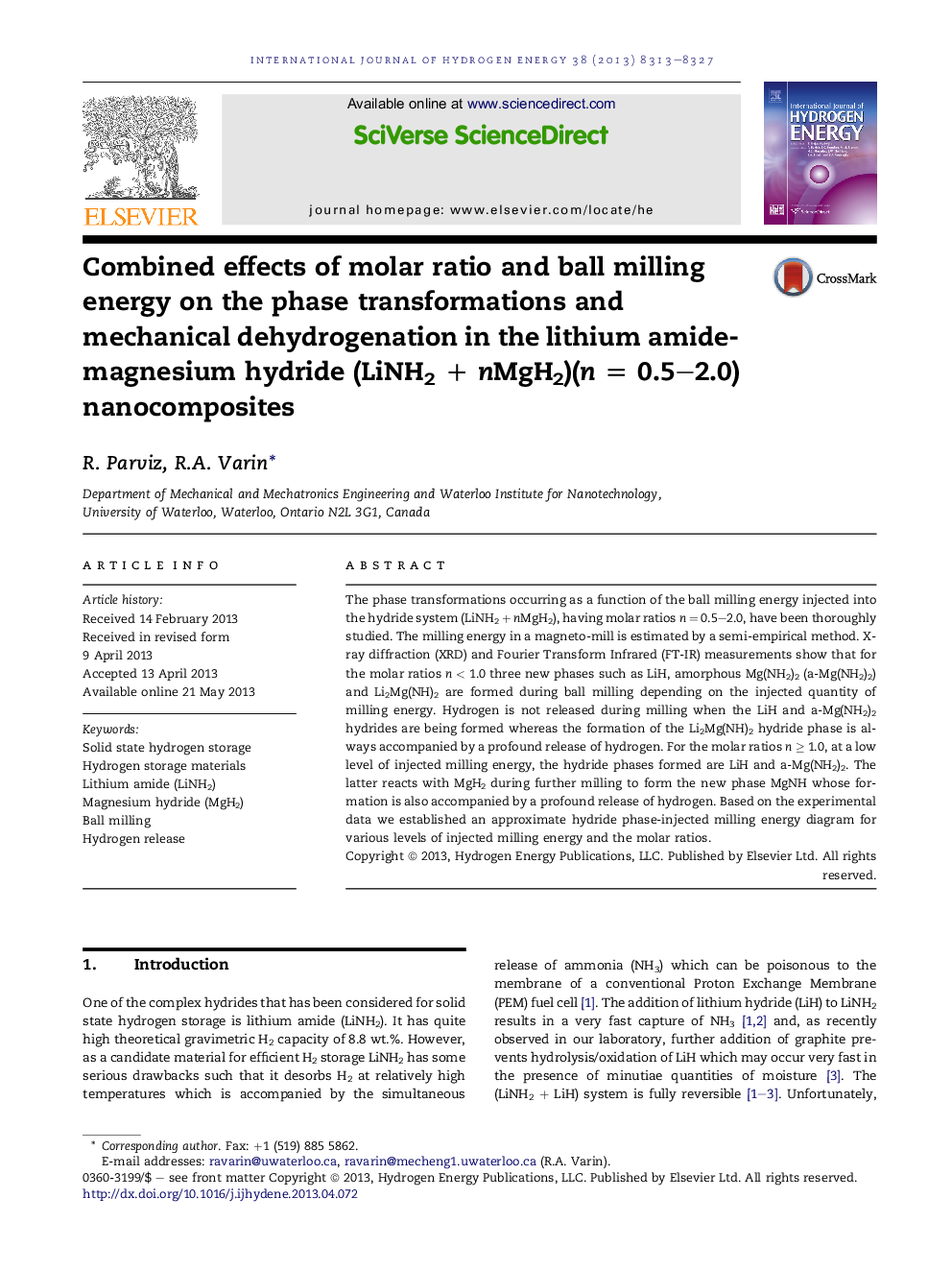| Article ID | Journal | Published Year | Pages | File Type |
|---|---|---|---|---|
| 7722585 | International Journal of Hydrogen Energy | 2013 | 15 Pages |
Abstract
The phase transformations occurring as a function of the ball milling energy injected into the hydride system (LiNH2 + nMgH2), having molar ratios n = 0.5-2.0, have been thoroughly studied. The milling energy in a magneto-mill is estimated by a semi-empirical method. X-ray diffraction (XRD) and Fourier Transform Infrared (FT-IR) measurements show that for the molar ratios n < 1.0 three new phases such as LiH, amorphous Mg(NH2)2 (a-Mg(NH2)2) and Li2Mg(NH)2 are formed during ball milling depending on the injected quantity of milling energy. Hydrogen is not released during milling when the LiH and a-Mg(NH2)2 hydrides are being formed whereas the formation of the Li2Mg(NH)2 hydride phase is always accompanied by a profound release of hydrogen. For the molar ratios n â¥Â 1.0, at a low level of injected milling energy, the hydride phases formed are LiH and a-Mg(NH2)2. The latter reacts with MgH2 during further milling to form the new phase MgNH whose formation is also accompanied by a profound release of hydrogen. Based on the experimental data we established an approximate hydride phase-injected milling energy diagram for various levels of injected milling energy and the molar ratios.
Related Topics
Physical Sciences and Engineering
Chemistry
Electrochemistry
Authors
R. Parviz, R.A. Varin,
